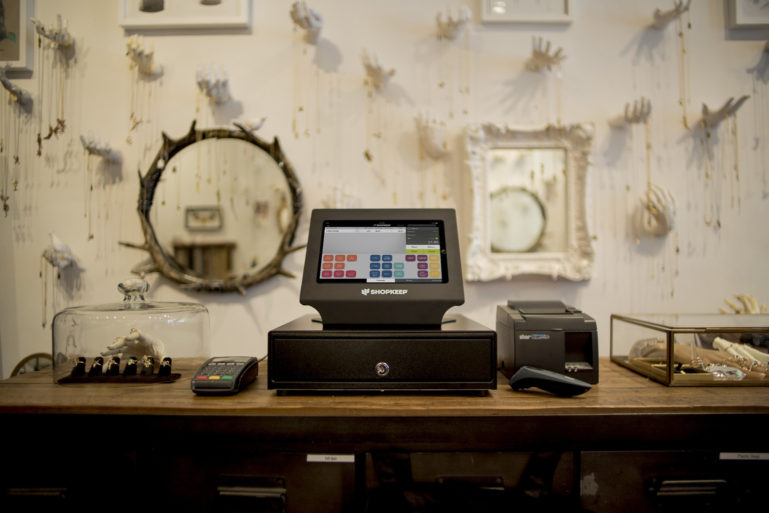
Payment Trends to Look Out for in 2017
Payment trends have changed substantially over the past decade due to the competitive market of technology.
And with each year we see new additions to a roster of technology that makes running transactions and exchanging money easier and more efficient for both merchants and customers. Technology has progressed to the point where the transfer of payments is now not only convenient but can also be done securely and with less overhead. Every year, consumers and merchants alike are pleasantly surprised with new payment trends. Going into 2017, here are 5 payment trends all small business owners should be aware of and why.
1. The Adoption of Cloud-Based POS Systems will Continue to Grow
Small business merchants further recognize the value and convenience of cloud-based software and continue to adopt the cloud-based POS systems payment trend. So if you haven’t updated your POS system yet, 2017 is the year to take the plunge.
Not only do POS systems allow merchants to easily accept a variety of payment methods (cash, credit card, and contactless payments), but they also allow small business owners to track sales, inventory, and employee performance. They also allow for enhanced customer marketing.
Unlike big clunky cash registers of the past that stored data on local servers, the new wave of POS systems is cloud-based, which means a business’ information is stored in the cloud and is accessible from anywhere and at any time as long as an internet connection is available. And unlike older systems that would charge you a fee for updates, cloud-based systems are updated more frequently and without an added expense. This payment trend encourages faster and cheaper updates which mean more money in a small business owner’s pocket to spend as they see fit.
An additional advantage of this payment trend is the added security. Since your information isn’t being stored on a hard drive, if a thief gets ahold of your computer, they won’t be able to access any of your information. As long as you keep your password well protected, your data should remain secure. Overall, a cloud-based POS allows for easier transactions, better flexibility in reporting, and added security.
2. Increased Customer Adoption of Mobile Payments
Near field communication, or NFC (the technology used in mobile payments such as Apple and Samsung Pay) is the latest in mobile payments trends — becoming increasingly popular among younger demographics. NFC allows two devices within a short proximity (just a few centimeters) to exchange data. The only catch is both devices must have an NFC-enabled chip.
Once it’s enabled, simply process the transaction as usual. When it’s time to checkout, the customer will hold their phone up to the NFC-enabled reader until the transaction reads “authorized.” Then, they’ll print or email the receipt. Merchants will want to update their credit card readers to make certain it is NFC-enabled as tech companies are putting more resources behind this payment trend.
Both Apple and Samsung have developed applications for their phone users and Business Insider reports that Apple Pay is growing by one million new users per week. Three out of four contactless payments in the U.S. are now using Apple Pay — more than Android and Samsung Pay. In 2016 Canada, U.K., China, Singapore, Switzerland, France, and Hong Kong have adopted the use of Apple Pay. Apple plans to integrate Apple Pay into web browsers as well. As Apple continues to iron kinks out, gaining more notoriety, expect a huge shift in 2017.
According to Wirecard, on average this payment trend saves 50 percent of the time used for conventional card payments. Customers want it and merchants benefit from the amount of time saved to process the transaction. It’s a win-win for both parties.

3. The Use of Subscription Service will Increase
Some industries have adopted a subscription-based model over the traditional pay-per-product model. Rent The Runway is one of the most popular subscription-based companies. Rent The Runway allows women to rent a dress for a set period of time. Other companies such as Le Tote and RocksBox have similar models. The subscription-based model continues to gain attention expanding even to tea connoisseurs — 52Teas allows customers to try a new tea each week.
The largest benefit companies enjoy from using this model is a guaranteed revenue stream. It allows merchants to strategize and invest accordingly. Flexibility and convenience are great, but if the customer service isn’t up to par would you use that company again? Probably not. This is one way small businesses can maintain their footing in a sea of subscription services. Regardless of the convenience of these new services, nothing can replace amazing customer service. If small retailers concentrate and focus on providing outstanding human and personal interaction, they’ll be able to weather the storm.
So, build firm relationships with customers and ask for feedback. Customers enjoy feeling appreciated and feedback allows merchants a greater opportunity to better serve their customers. In a highly competitive digital era, merchants need to consider every strategy.
SEE ALSO: Here Is How to Keep Your Customer Retention Rate High
4. Expect Customers to Expect More Rewards
More so than ever, customers are experiencing an abundance of rewards programs. But with this payment trend comes an expectation that this level of rewards will not only be maintained but increased. Though good for customers and marketing, how are small retailers able to prepare for such drastic competition? The answer lies in knowing your customers and being able to anticipate their wants and needs.
Merchants live in an informational and technology driven time. Therefore their success is contingent on how in tune they are with their customers’ path to purchase. The more in tune merchants are with customers, the better they can tailor their marketing and rewards program to yield better results. Send out coupons, deals, or promotions that spark customer interest. Rewarding customers for their loyalty is considered one of the best ways to retain long-term, repeat customers.
5. Mobile Ordering and Payments
Quick-serve restaurants are experiencing a surge in the mobile ordering. Mobile orders and payments allow customers to select a location, place an order, pay for that order, and walk up to the counter and pick up their purchase.
Companies like Starbucks and Taco Bell are experiencing a tremendous amount of buy-in using this payment trend. In less than three months Starbucks’ mobile application had 5 million transactions, while Taco Bell had 2 million downloads for their mobile application.Taco Bell has reported a 17 percent increase in sales.One of the best parts about this payment trend is the increase in sales. Tacos bell says it comes from the ability to simply tap a button and add a side — encouraging customers to purchase more.
At some point, small business merchants may want to add a mobile application in order to better appeal to their customers. In the interim, those in the food industry will need to find new and creative ways to entice customers to make more impulse buys. Merchants may want to start with increasing the visibility for best-selling items or items customers can easily add to their existing purchases. Another tactic merchants can try is asking if the customer would like to upgrade their order for a small additional charge.This can be as simple as adding another side or upgrading the size of a soda.
By focusing on creating a superior customer experience, technology has provided merchants with more insight, quicker and safer checkouts, and a chance to reach a larger audience through convenience. Merchants are realizing that times have changed and that it’s now a buyer’s market. In order to stay competitive, they’ll need to adopt new payment trends.
Want to try ShopKeep for yourself?
Just answer a few easy questions.
Need help finding the right point of sale?
Just complete the form. We’ll call you right back to explain how ShopKeep can work for you.
Hit the ground running.Sprinting, in fact!
Read our free, comprehensive guide, Small Business 101, to learn all you need to know about starting a thriving business.

